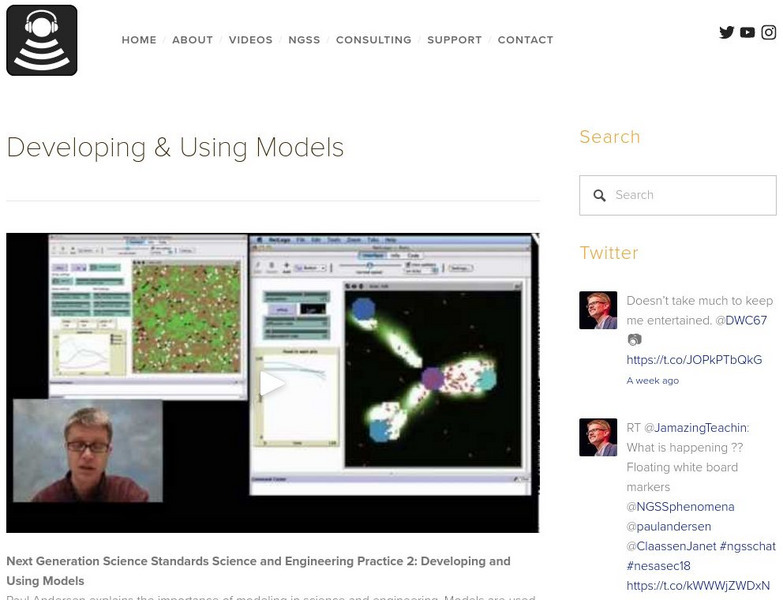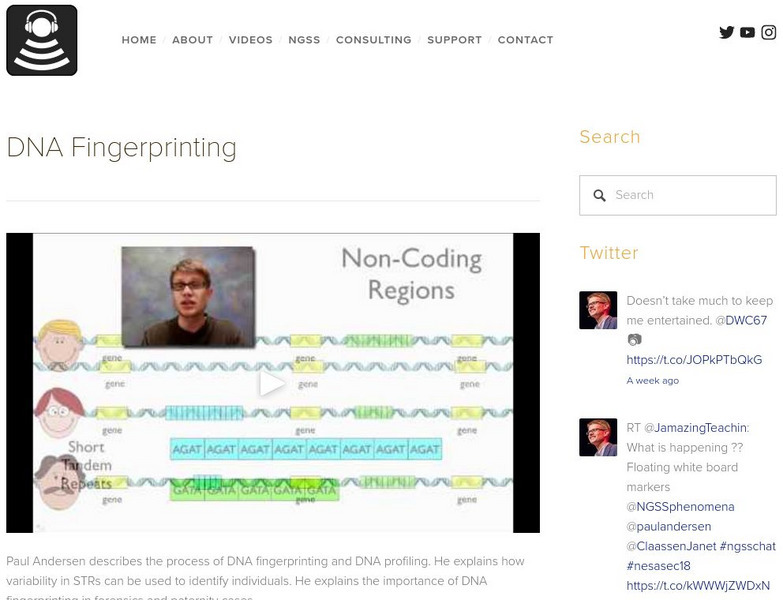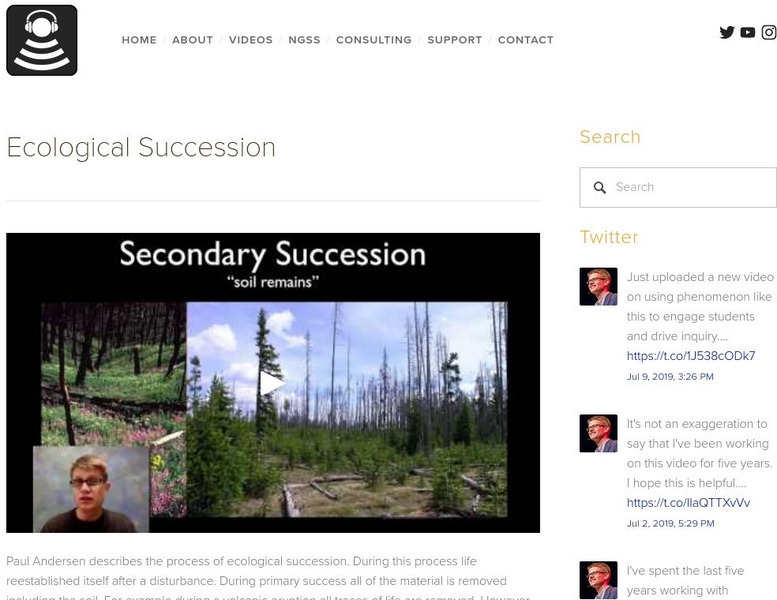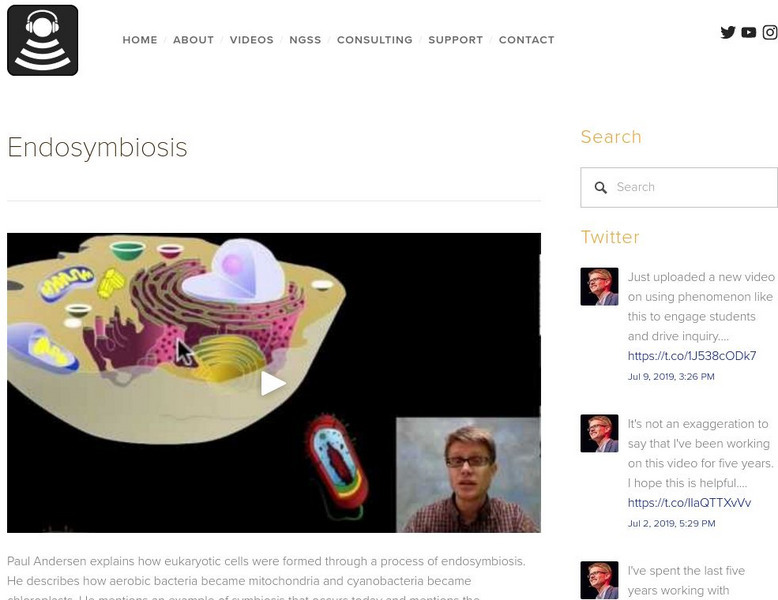Hi, what do you want to do?
Bozeman Science
Bozeman Science: Cause & Effect: Mechanism and Explanation
Paul Andersen explains cause and effect its importance in science and engineering. He starts by addressing the chain of interactions that must be present to show cause and effect. He addresses the assumptions of universality and scale in...
Bozeman Science
Bozeman Science: Cell Division
Paul Andersen explains how cells duplicate through the process of cell division. Prokaryotic cells (like bacteria) duplicate through a process of binary fission. Eukaryotic cells (like you) duplicate body cells through mitosis and create...
Bozeman Science
Bozeman Science: Cell Membrane
Paul Andersen gives you a brief introduction to the cell membrane. He starts by describing amphipathic nature of a phospholipid and how it assembles into a membrane. He gives an overview of the fluid mosaic model inside cells. He also...
Bozeman Science
Bozeman Science: Cellular Respiration
Paul Andersen covers the processes of aerobic and anaerobic cellular respiration. He starts with a brief description of the two processes. He then describes the important parts of the mitochondria. He explains how energy is transferred...
Bozeman Science
Bozeman Science: Cellular Respiration Lab Walkthrough
Mr. Andersen walks you through the cellular respiration lab.
Bozeman Science
Bozeman Science: Chemical Bonds Covalent vs Ionic
Mr. Andersen shows you how to determine if a bond is nonpolar covalent, polar covalent, or ionic.
Bozeman Science
Bozeman Science: Chi Squared Test
Paul Andersen shows you how to calculate the ch-squared value to test your null hypothesis. He explains the importance of the critical value and defines the degrees of freedom. He also leaves you with a problem related to the animal...
Bozeman Science
Bozeman Science: Chromosomal Genetics
Paul Andersen explains aspects of genetics that were not covered by Gregor Mendel. He begins with the following topics; incomplete dominance, codominance, epistasis, multiple alleles, and multiple genes. He then explains how linked genes...
Bozeman Science
Bozeman Science: Circulatory System
Paul Andersen surveys the circulatory system in humans. He begins with a short discussion of open and closed circulatory systems and 2,3, and 4-chambered hearts. He describes the movement of blood through the human heart and the blood...
Bozeman Science
Bozeman Science: Cladograms
Paul Andersen shows you how to construct a cladogram from a group of organisms using shared characteristics. He also discusses the process of parsimony in cladogram construction. He then explains how modern cladograms are constructed and...
Bozeman Science
Bozeman Science: Classification of Life
Paul Andersen explains the current classification system that we use in Biology. He starts with a brief history of taxonomy. He explains how the goal of classification is to reflect evolutionary relationships. He then explains how each...
Bozeman Science
Bozeman Science: Comparing Dna Sequences
Paul Andersen shows you how to compare DNA sequences to understand evolutionary relationships. He starts with a brief introduction to cladograms and evolutionary relationships. He shows you how to classify DNA relationships using a...
Bozeman Science
Bozeman Science: Constructing Explanations & Designed Solutions
Paul Andersen explains how scientists modify theories by constructing explanations. He also discusses the cycle of design used by engineers to solve problems. He starts by defining a theory as a well-established explanation of a...
Bozeman Science
Bozeman Science: Coupled Reactions
Paul Andersen explains the importance role of coupled reactions in biology. He starts by explaining how the power of a river can be harnessed by a water mill to grind grains. He describes the importance of ATP and how it is used within...
Bozeman Science
Bozeman Science: Developing & Using Models
Paul Andersen explains the importance of modeling in science and engineering. Models are used by scientists to explain phenomenon. Unlike mental models, conceptual models can be shared by all scientists to improve our understanding of...
Bozeman Science
Bozeman Science: Diffusion Demo
Mr. Andersen talks you through the diffusion demo. After you finish watching this video you should be able to rank the following from smallest to largest: starch, glucose, water, IKI and the pores in the dialysis tubing.
Bozeman Science
Bozeman Science: Diploid vs Haploid
In this video, Paul Andersen explains the difference between diploid and haploid cells. He starts with a brief description of the central dogma and how genes code for proteins. He then uses the phenotype of red hair to explain that...
Bozeman Science
Bozeman Science: Dna Fingerprinting
Paul Andersen describes the process of DNA fingerprinting and DNA profiling. He explains how variability in STRs can be used to identify individuals. He explains the importance of DNA fingerprinting in forensics and paternity cases.
Bozeman Science
Bozeman Science: Dna Replication
Paul Andersen explains how DNA replication ensures that each cell formed during the cell cycle has an exact copy of the DNA. He describes the Meselson-Stahl experiment and how it showed that DNA copies itself through a semi-conservative...
Bozeman Science
Bozeman Science: Drawing Lewis Dot Diagrams
Mr. Andersen shows you how to draw Lewis Dot Diagrams for atoms and simple molecules.
Bozeman Science
Bozeman Science: Ecological Succession
Paul Andersen describes the process of ecological succession. During this process life reestablished itself after a disturbance. During primary success all of the material is removed including the soil. For example during a volcanic...
Bozeman Science
Bozeman Science: Electricity & Electric Circuits
Mr. Andersen introduces the topic of electricity. He differentiates between static electricity and current electricity. An introduction to electric circuits is also included.
Bozeman Science
Bozeman Science: Elements of a Feedback Loop
Paul Andersen defines the major elements of feedback loops. The receptors and effectors both sense and respond to changes in their environment. The following examples are used to illustrate the importance of feedback loops in maintaining...
Bozeman Science
Bozeman Science: Endosymbiosis
Paul Andersen explains how eukaryotic cells were formed through a process of endosymbiosis. He describes how aerobic bacteria became mitochondria and cyanobacteria became chloroplasts. He mentions an example of symbiosis that occurs...




























